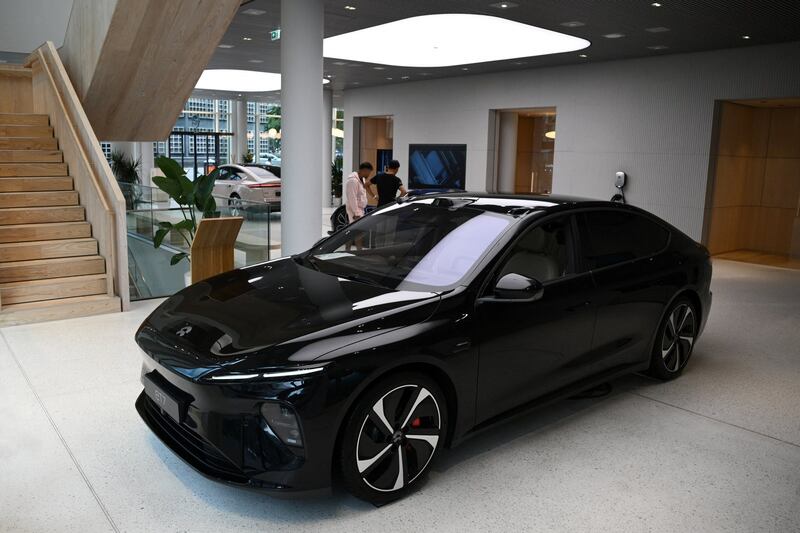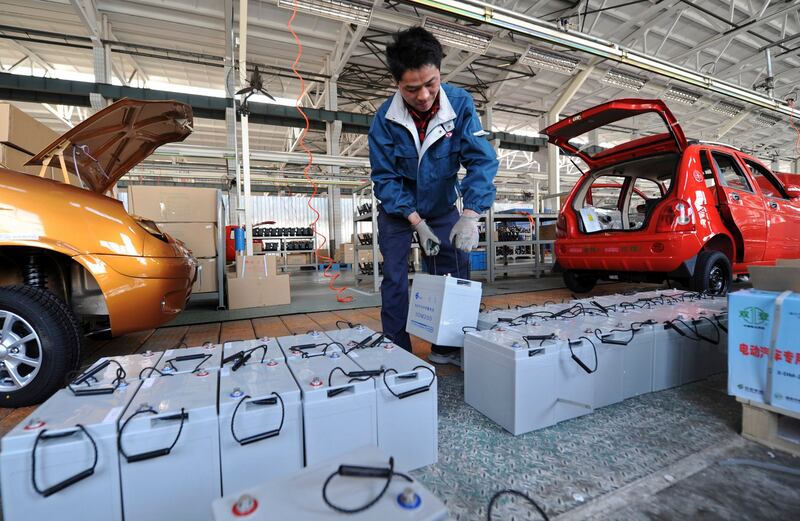The number of Chinese automakers at the International Automobile Association Mobility Conference in Munich this week has spooked some European auto sector bosses.
"It's a Chinese takeover," came the text from an alarmed senior executive, standing amid a vast array of gleaming Chinese vehicles at the show, reported sector analyst Michael Dunne on social media.
"China invades Germany," said another auto watcher.
“China could be exporting 9 million cars a year by 2030,” Dunne, who heads an EV market consultancy, added.
As the world watches China’s broader economy slump amid post-pandemic weak demand, with consumers and businesses paying down debt rather than spending, at least one sector in the Chinese economy gives every appearance of operating in overdrive.
Commenting on a Wednesday New York Times article, economist and Carnegie Endowment senior fellow Michael Pettis said in a thread on X, formerly known as Twitter: "Overall exports of Chinese goods, everything from furniture to consumer electronics, slumped 5.5 percent in the first eight months of this year. But this year, exports of cars surged 86 percent through July."
China’s auto sector – in particular electric vehicles (EVs) – is expanding at such breakneck speed that competitor manufacturers everywhere from Germany to South Korea are lamenting that the entire sector faces being flooded and going into crisis.
Auto powerhouse Germany is “losing its competitiveness” and is now in “an acute situation in which investments have to be made,” said Hildegard Mueller, president of the German Association of the Automotive Industry, to attendees of the Munich AII on Tuesday.

Demand for Chinese-made affordable vehicles, both gasoline- and electric-driven is such now that “the biggest obstacle to selling more abroad is a lack of specialized ships to carry them,” the New York Times reported.
The report continued that a building frenzy is underway in shipyards along China’s Yangtze River, manufacturing “floating parking lots” that can carry 5,000 cars at a time to markets worldwide.
Step aside tech giants
Not so long ago, China’s towering private businesses were almost all internet giants – Tencent Holdings, Alibaba Group, Didi Global.
That’s changed.
In 2018, nearly U.S.$40 billion in venture capital flowed into China’s Internet sector compared to around U.S.$5 billion for the electric and hybrid vehicle sector. By 2022, the internet sector was attracting just U.S.$5 billion and electric and hybrid vehicle makers – as well as battery makers – were seeing capital venture inflows of U.S.$15.2 billion.
In part, as was widely reported at the time, China's internet sector was forced to beat a retreat under the eye of the Chinese Communist Party in Beijing, which regarded the tech titans – some of which operated their own scaled economies for buying anything and with their own financial payments systems – as a threat.
The EV sector, on the other hand, is aligned with China’s focus on tech and innovation, which is central to its aim of becoming a “tech superpower” by 2050. EVs have the support of the central government, unlike the internet giants.
Incentives
In fact, the Chinese government has propped up the domestic EV sector in the form of generous government subsidies, tax breaks, and other policy incentives – including, on the local level, tempters such as rent-free land for factories etc. The result is an army of homegrown EV brands that now present a challenge to the auto sector worldwide.
Some analysts say China was almost pushed into making the move.
Tu Le, managing director of Sino Auto Insights, a business consulting firm that specializes in transportation, noted earlier this year that, while China in the early 2000s had no shortage of manufacturers of internal-combustion vehicles it had no car brands.
“They realized … that they would never overtake the US, German, and Japanese legacy automakers on internal-combustion engine innovation,” says Tu, adding that this led to a risky but eventually successful EV revolution.
The question is success at what future costs.

The popularity of EVs in China is such that demand for gasoline-powered vehicles has collapsed, while between 2020 to 2022, annual sales of EVs in China grew from 1.3 million to 6.8 million.
But if demand for non-EVs has collapsed in China, manufacturing hasn’t stopped.
Notes economist Pettis, “Demand for gasoline-powered cars has collapsed within China, but rather than close down manufacturing facilities, they are kept open with subsidies and easy access to credit. The only option, in that case, is to expand exports.”
He adds: “This places enormous pressure on foreign car producers, who simply cannot compete with manufacturers that don't have to worry about budget constraints or access to credit.”
However, according to economists, the burden of cost wars should be contrasted with the burden on China.
When a stagnant economy is being “highly subsidized areas for which there is little demand at home, the economy must increasingly rely not just on unsustainable increases in debt, but also on unreliable – and highly politicized – foreign demand to prevent the economy from slowing,” noted Pettis, who uses the term “soft budget restraints” to refer to incentivizing easy money.
"China's booming car exports are not signs of rude good health," said Pettis on social media. "They're symptoms of weak domestic demand, structural imbalances, and an over-reliance on soft budget constraints.
Edited by Mike Firn and Elaine Chan.
